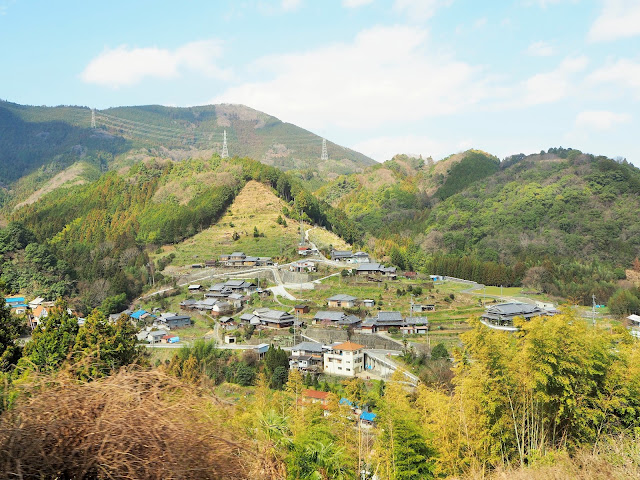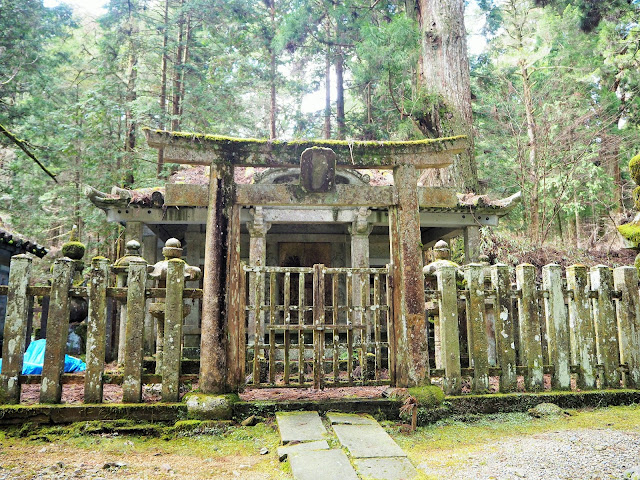Bei den Reisevorbereitungen dachte ich mir nur "Kōya-san!? Oha, ein Berg!" und dass es vielleicht komplizert werden würde, den zu besichtigen... oder dann sehr anstrengend. Man nimmt tatsächlich zuerst die Bahn, dann eine Seilbahn und danach den Bus, bevor man in etwa zwei Stunden (von Osaka aus) am Ziel ist, aber schon die Fahrt an sich war einfach schön...
While preparing our Japan trip i only thought "Kōya-san!? Oh, my... a mountain!" and that it might be complicated to get there... or a really exhausting visit. It takes indeed about two hours (from Osaka) to get there by train, cable car and bus, but the trip and the things you see are already so rewarding...
While preparing our Japan trip i only thought "Kōya-san!? Oh, my... a mountain!" and that it might be complicated to get there... or a really exhausting visit. It takes indeed about two hours (from Osaka) to get there by train, cable car and bus, but the trip and the things you see are already so rewarding...
Kōya-san ist einer der zentralen Orte des japanischen Buddhismus und bereits im 9. Jahrhundert durch den Mönch Kūkai/Kōbo-Daishi besiedelt worden. Den Namen könnt ihr euch schon mal merken, denn dieser Typ hat nicht nur den (Shingon-) Buddhismus nach Japan gebracht, sondern er war auch Dichter, Gelehrter, Künstler und überhaupt eine wichtige Figur in der japanischen Kultur (er soll bspw. wesentlich zur Entwicklung der japanischen Schriftzeichen beigetragen haben).
Kōya-san is one of the central places for Japanese Buddhism and settlements already started in the 9th century with the monk Kūkai/Kōbo-Daishi. You better keep that name in mind as this guy did not only bring (Shingon) Buddhism to Japan but was also a poet, scholar, artist and all in all just a very important person in Japanese culture (he's said to have had a very big impact in developing the Kana signs for Japanese writing).
Kōya-san is one of the central places for Japanese Buddhism and settlements already started in the 9th century with the monk Kūkai/Kōbo-Daishi. You better keep that name in mind as this guy did not only bring (Shingon) Buddhism to Japan but was also a poet, scholar, artist and all in all just a very important person in Japanese culture (he's said to have had a very big impact in developing the Kana signs for Japanese writing).
Zuerst schauen wir uns heute in der Gegend von Oku-no-in um: ein Tempel-Komplex mit Nekropole und dem Mausoläum Kūkais (dort darf man allerdings keine Bilder machen). Allein das Wäldchen, in dem so viele Gräber liegen (übrigens auch von großen Firmen "gesponsored"), ist einen Spaziergang wert... wunderschöne alte (und riiiesige) Bäume säumen den Weg vorbei an spannenden Statuen, Steinen, Buddhas, Jizos...
First we'll have a look at the Oku-no-in area which is a temple complex surrounded by a nekropolis and Kūkai's resting place (where you can't take photos). The forrest that hosts so many graves (some of them sponsored by big companies btw) is really worth a stroll... wonderful old (and huuuge) trees line the ways along interesting statues, buddhas, stones and jizos...









































Auch wenn die Faune etwas anders ist, vom Wetter her mutet das ja doch recht März-mitteldeutsch an, oder? :D
AntwortenLöschenrichtig - von den temperaturen her ist japan nicht viel anders als deutschland :) und auf'm berg war's dann auch entsprechend frisch... als bonus bekommt das land aber noch ne runde subtropen, wirbelstürme, flutwellen und -wie ich hörte- einen unerträglich humiden sommer ;)
LöschenVery interesting photos, the mix of Shinto and Buddhist religion has always been fascinating to me.
AntwortenLöschen